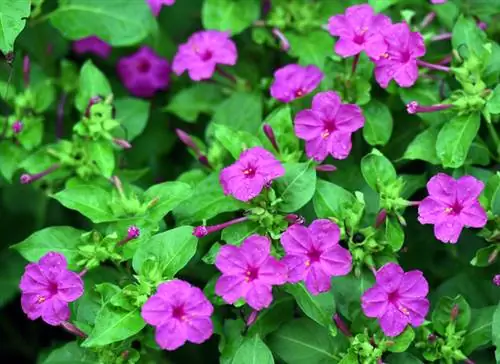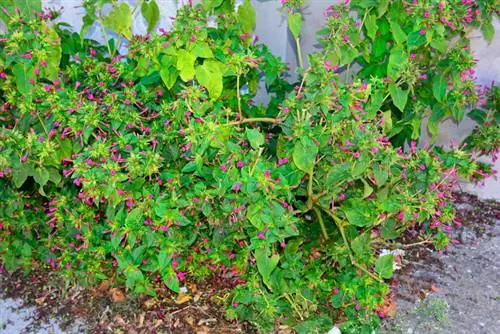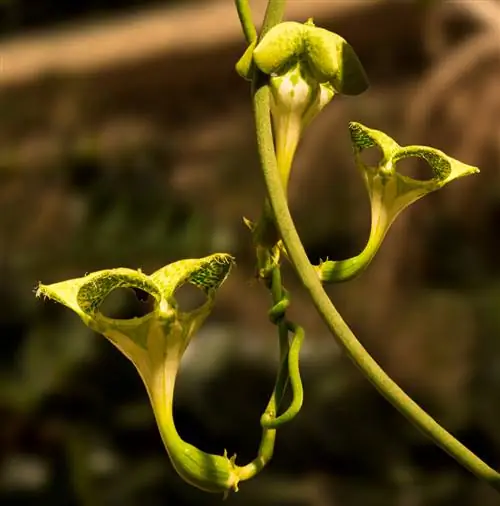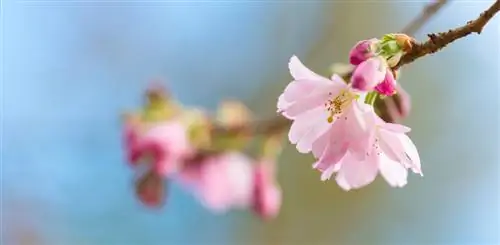- Author admin [email protected].
- Public 2023-12-16 16:46.
- Last modified 2025-01-23 11:20.
Highly sensational in spring, fading into the background in summer and ending its season with a firework of colors in autumn - the Japanese ornamental cherry is a popular ornamental tree. Everything you should know about it is clearly summarized here.
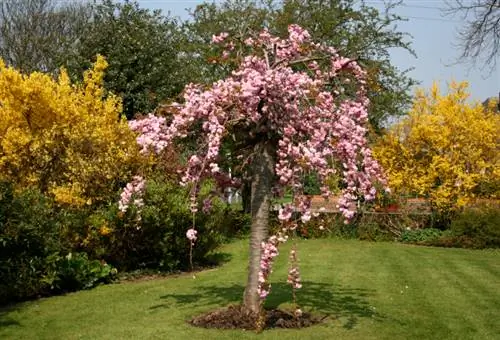
What is the Japanese cherry and how do you care for it?
The Japanese ornamental cherry (Prunus) is an ornamental tree from Japan up to 12 m high with egg-shaped, summer green leaves and spectacular flowers in white, pink or pink from March to April. It prefers full sun locations, humus-rich and calcareous soil. Care includes thinning and, if necessary, lime and phosphorus fertilization.
Short profile of Japanese ornamental cherry
- Home: Japan
- Plant family and genus: Rosaceae, Prunus
- Growth: upright, broadly funnel-shaped to overhanging, up to 12 m high, 5 to 8 m wide
- Foliage: deciduous, ovate to elliptical, serrated
- Flowering: March to April
- Fruits: July, stone fruits
- Location: full sun, protected
- Soil: humus-rich, calcareous, moist
- Diseases and pests: Monilia, shotgun disease
- Propagation: cuttings
- Care: Thinning
- Use: ornamental trees for parks, avenues, gardens
Your external appearance
While the wood is covered by a gray-brown to gray-black bark with characteristic horizontal stripes, the leaves are colored medium green to dark green. They are arranged in an alternating sequence around the shoots, are smooth, ovoid to elliptical in shape and tinted yellow to red in autumn.
Before the summer green foliage appears, the hermaphrodite and five-petaled flowers of the Japanese cherry are presented. They grow up to 5 cm wide, decorate the entire crown in a large variety and are extremely ornamental due to their white, pink to neon pink color.
With luck, the flowers will be replaced by the edible cherries. As a rule, no fruits form. But if they do, they ripen in July. They are colored dark red to black.
Your location requirements
The Japanese ornamental cherry prefers to be planted in a place with full sun - ideally in autumn. This is where it produces most of its flowers. The soil should be deep and well-drained. Slightly sandy-humous substrates that have an alkaline pH value are well suited.
Care needs and handling
The care requirements of this plant are extremely low. It has good winter hardiness and all it takes to care for it is to water and thin it out regularly in the early years. It does not necessarily require the addition of fertilizer. If necessary, it can be supplied with lime and a fertilizer rich in phosphorus. There is usually no need to take action against diseases and pests as this plant is extremely robust.
Tips & Tricks
Annual thinning of this ornamental cherry largely prevents the development of diseases and preserves its flowering.


